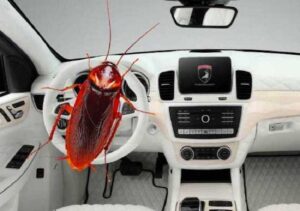Look at all the different pests that could be haunting your home, and you can bet that one of them is a cockroach. There are many ways to remove these unwanted guests from your life, but some may require more advanced technology than others. In this blog article, we’re going to talk about some of the most common pest control technologies.
What is Pest Control?
The world of pest control is constantly evolving, and as technology advances, so does the way in which pests are controlled. Advanced technologies in pest control include both conventional and non-conventional methods. Non-conventional methods, such as using natural predators to control pests, are becoming more popular as they are more effective and environmentally friendly.
Conventional pest control techniques have also undergone major changes in recent years. For example, insecticides that were once only used on crops have now been developed to kill a variety of pests, including householdbugs and cockroaches. This increased versatility has made conventional pest control methods even more effective and efficient.
Types of Pests
There are many types of pests that can invade a property, whether they are insects, rodents, or other kinds of animals. Understanding the different types of pests and their behaviors will help you choose the best pest control strategy for your specific situation.
One of the most common pests in residential areas is the cricket. These small creatures love to live in warm, humid environments and can cause significant damage to property by eating crops or damaging electrical systems. To get rid of crickets, you can use traps or sprays designed to kill them.
If you have a problem with rodents, your first step should be to identify the type of rodent that is causing the issue. Rodents come in many different shapes and sizes, so it can be difficult to determine which one is causing the problems. Once you know what kind of rodent is causing the issue, you can choose a pest control strategy that is specifically designed to deal with that type of rodent.
Some other pests that can cause a lot of damage include spiders and ants. Spiders are often afraid of humans, so they will usually stay away from people and homes. However, if they do get into a home, they can cause a lot of damage by eating the food in the house.
Why use Advanced Technologies?
Advanced technologies are the best way to control pests. They allow for more efficient, accurate and safe pest control. Here are some reasons why:
Advanced technologies are more accurate. They use sensors and algorithms to identify pests and target the most effective treatment.
Advanced technologies are more efficient. They use fewer resources, which means fewer unwanted impacts on the environment.
Advanced technologies are safer. They use less powerful chemicals, which means they are less likely to cause harm to people or the environment.
Treatment
The target species is detected by a sensor, which sends data to the applicator. The applicator then works out a suitable treatment based on the data and decides how many doses of each product are needed for each application. The dispenser will then automatically dispense appropriate amounts of each product.
Target
A constant monitoring system monitors both potential target pests and non-target organisms in the environment that are not pests. If any changes occur in an organism’s structure (e.g. dead body or excreta) it can alert you, who may need to take action immediately.
What are the Pros and Cons of Advanced Technologies?
Advanced technologies in pest control can offer better control of pests and improve efficiency. However, there are also some cons and pros associated with using these technologies.
Pros:
- Provides a variety of tips on controlling pests
- Offers step-by-step instructions on how to apply the techniques
- Provides pictures and videos illustrating the steps
- Includes a glossary of terms
- Can be accessed online or in print
Cons:
- May not be applicable to all areas
- Some techniques require access to a pest control technician
- May require periodic updating
How to Identify Different Types of Pests and Their Behaviour?
When it comes to pests, identifying them can be a daunting task. Different pests can look and act very differently, which can make it difficult to know what to do about them. To help make things a bit easier, this blog will discuss the different types of pests and their behaviour.
One of the first things you need to do when identifying a pest is figure out what it’s eating. This is especially important if you don’t know what type of pest you have or where it came from. Look for clues in the surrounding area and look at the insects, spiders or other creatures that are drawn to the food source. Once you have an idea of what’s causing the problem, you can start figuring out how to deal with it.
Some pests like mosquitoes need water in order to thrive, so keeping your property well-watered can help control them. Other pests like rodents need food or shelter in order to survive, so removing any sources of either will usually kill them off. Pest control experts also use poison to kill specific types of pests, but always be sure to read the label carefully before using it.
The Importance of Advanced Technologies in Pest Control?
Advanced technologies are an important part of pest control. They allow us to identify pests and their habitats more accurately, and to take effective action against them. Here are some of the most advanced technologies in pest control:
1. Pesticide Resistance Monitoring
This technology allows us to track the spread of pesticide resistance among pests. It helps us develop effective countermeasures against resistant pests.
2. Imaging Technologies
These technologies allow us to see inside buildings and other structures. They can help us identify pests and their habitats, and take appropriate action against them.
3. RFID Technology
This technology uses radio waves to identify and track objects. It is used in various fields, such as security, logistics, and healthcare.
4. Remote Sensing Technologies
These technologies use sensors to measure the physical properties of objects or environments. They can be used for a variety of purposes, including land use planning, environmental monitoring, and crop insurance forecasting.
Conclusion
Advanced Pest Control Technologies are needed to properly identify and eradicate pests in the most effective way. With the help of special equipment, such as Thermal Imaging Cameras, Professional Pest Controllers can detect infestation before it becomes a problem. By implementing these technologies early on in an infestation cycle, you can save valuable time and resources that would be better used combating the pest rather than trying to clean up after them.




